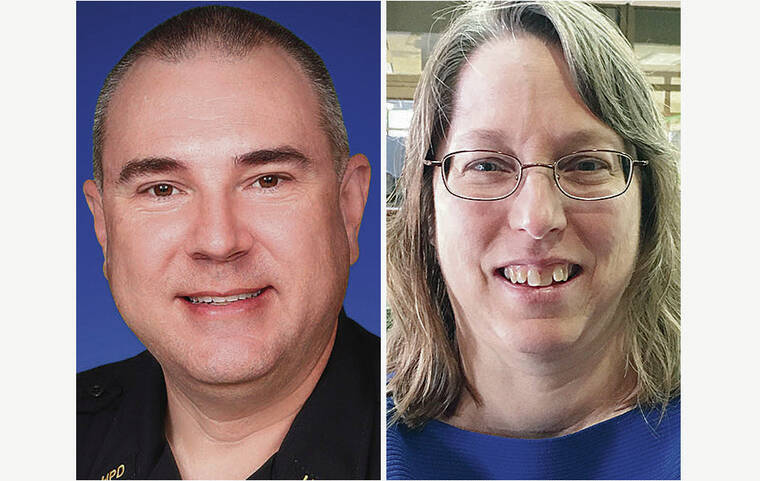Hawaii County has purchased two 40-foot refrigerated containers and is exploring the possibility of an emergency proclamation to start using them as a temporary storage facility for the bodies of decedents whose deaths occurred somewhere other than Hilo Benioff Medical Center.
According to county Managing Director Deanna Sako, the purchase price for the two containers was “just
under $80,000.”
The containers are the first step toward solving a severe overcrowding issue in the hospital’s morgue that has overburdened the facility’s refrigerator system.
HBMC months ago requested that the Hawaii Police Department remove by Sept. 1 what are referred to as “HPD bodies” from its morgue.
Under state law the chief of police in each county is the county coroner, and police officers are deputy coroners. Police, as coroners, have used the hospital’s morgue as a holding facility for bodies in coroner’s inquest cases and in criminal investigations.
Hawaii Police Chief Benjamin Moszkowicz told the county Police Commission on Aug. 30 that police continue to keep those bodies in the morgue “under an
extension from the September 1 date.”
“However, by the end of September, we will likely have to implement a county solution,” Moszkowicz told commissioners. “This has led to a frantic search for a solution.”
HBMC spokesperson Elena Cabatu told the Hawaii Tribune-Herald in July that the morgue — which is in the basement of the hospital, built in 1984 — was originally built for a capacity of 16 bodies. She said it’s not uncommon for there to be 25 bodies, with HPD consistently accounting for “over 60% to 70% of the bodies held in the HBMC morgue.”
Moszkowicz said police continue to meet with Mayor Mitch Roth, Sako, Public Works and the corporation counsel, as well as Gov. Josh Green and the state Attorney General’s
Office “to implement a
solution.”
Roth and Sako said they are considering multiple locations to house the containers — including the grounds of the almost-
completed Hawaii County Emergency Call Center, adjacent to Mohouli Senior Housing in Hilo, as well as the campus of the former Hilo Memorial Hospital on Rainbow Drive.
“We’re trying to be good partners,” Roth told the
Tribune-Herald. “We’ve been having some really good conversations with the hospital. We understand the issues that they have. We’ve been looking at solutions to those problems. You know, one of the things that they brought to our attention is that sometimes the mortuaries are not taking (the bodies) on time. So, we’re working with the mortuaries to see if they can take them quicker.
“One of the things I’m encouraging corporation counsel to work into this plan … is that we set up in the rules that we charge the mortuaries,” he continued. “After X number of days, there’s going to be a storage charge that either offsets the charge for us running the temporary facilities or encourages the mortuaries” to claim the bodies.
Some of the issues that need to be worked out are electricity for the containers’ refrigeration, backup generators in case of extended power outages, and security — as well as possible permitting requirements for the temporary facility.
“One of the things under discussions is, Do we do an emergency (proclamation) on the county side for some of those permitting issues?” Roth said. “We’re trying to get this done as quickly as possible. It’s probably not going to happen in September. It’s probably not going to happen, maybe, until the end of October.
“This is a temporary solution, obviously.”
Meanwhile, the county is working toward a more permanent solution. On Thursday, Roth signed into law Bill 180, introduced by Puna Council member Matt
Kaneali‘i-Kleinfelder.
The legislation adds
$1.5 million for a county morgue to HPD’s capital budget and authorizes the issuance of general obligation bonds to fund the project.
“It’s kind of a work in progress; there are a lot of details that still need to be worked out,” said Sako, describing the entire situation, not just the new ordinance.
“The good thing is, I think everybody is working together to come up with solutions,” added Roth. “I think the unfortunate thing is, these hospitals were built
a long time ago. And it was always seen that the hospitals were the place where the bodies would be kept. And, you know, we’ve grown as a community, and the hospitals are looking at things that we thought would never have come
into our hands.”

